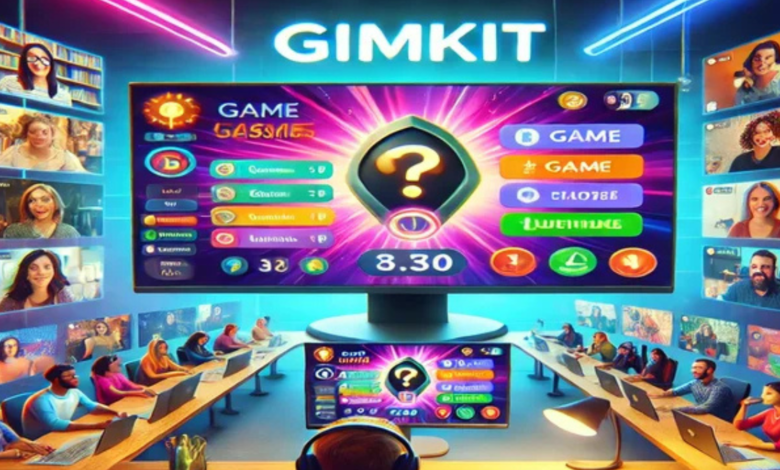What Every Educator Should Know About Being a Great Gimkit Host

Interactive tools like Gimkit have revolutionized education by blending technology and learning into an engaging experience. For educators, hosting a Gimkit game offers the opportunity to make lessons exciting and memorable. But being an effective host goes beyond launching a game session. It requires preparation, adaptability, and a clear understanding of both the platform and your students’ needs. This article will provide everything educators need to know about becoming a great Gimkit host.
Understanding the Role of a Gimkit Host
Hosting a Gimkit game means stepping into the role of facilitator, guide, and motivator. As a host, your primary objective is to ensure the session is educational, interactive, and enjoyable. A Gimkit host is responsible for:
- Creating or selecting question sets: The “kits” form the backbone of your game and should align with your curriculum.
- Setting up game modes: Gimkit offers various modes like “Classic,” “Teams,” and “Trust No One,” each with unique dynamics.
- Engaging students: As the host, it’s your job to maintain enthusiasm and focus during the game.
Preparing for a Successful Gimkit Session
Preparation is crucial to hosting a smooth and effective Gimkit game. Here are the key steps to follow:
Familiarize Yourself with Gimkit
Before hosting, spend time exploring the platform. Navigate through its features to understand how to:
- Create question sets or use pre-made ones.
- Customize gameplay settings like time limits and power-ups.
- Access reports to evaluate student performance.
Being confident in your knowledge of Gimkit ensures you’ll face fewer hiccups during the live session.
Customize the Game for Your Students
Each class has different needs, and your hosting style should reflect that. For younger students, choose simpler game modes with straightforward rules. For older students or advanced learners, consider modes that encourage critical thinking or collaboration.
You can also adjust gameplay settings to align with your teaching objectives. For example, limiting power-ups may ensure the game remains focused on knowledge rather than strategy.
Conduct a Test Run
Technical issues can disrupt the flow of your game. Conducting a test run ensures you’re familiar with how the game operates in real-time. It also allows you to troubleshoot potential problems before involving your students.
Tips for Hosting an Engaging Game
A great Gimkit host knows how to create a dynamic and inclusive environment. Here’s how you can excel:
Make the Game Inclusive
To ensure all students feel included:
- Design question sets that cater to a range of abilities.
- Mix easy and challenging questions to keep everyone engaged.
- Provide opportunities for collaboration by choosing team-based modes.
Encourage Participation
Some students may feel hesitant to engage. To address this:
- Encourage teamwork through collaborative modes like “Teams.”
- Praise effort, not just correct answers, to motivate students.
- Use humor and enthusiasm to create a relaxed atmosphere.
Keep Energy Levels High
A lively host can make all the difference. Use upbeat language, maintain a positive tone, and celebrate milestones during the game. For instance, acknowledge when a student achieves a streak of correct answers or when a team takes the lead.
Incorporate Feedback
After each game, ask students for their input. Questions like, “What did you enjoy most?” or “What could we improve?” can provide valuable insights for your future sessions.
Overcoming Challenges
No game session is perfect, and challenges may arise. Here’s how to tackle some common issues:
Technical Problems
Internet connectivity issues or platform glitches can disrupt gameplay. To minimize these problems:
- Ensure a stable internet connection before starting.
- Keep a backup plan, such as printed question sets or a different game mode that doesn’t rely on live play.
Managing Student Behavior
Lively games can sometimes lead to distractions. Establish ground rules before the game begins, such as raising hands to ask questions or staying seated during play. Gentle reminders during the game can help maintain focus.
Balancing Fun and Learning
While Gimkit is designed to be fun, it’s important not to lose sight of its educational purpose. Avoid overusing power-ups or game mechanics that detract from the learning experience. Instead, highlight how each question connects to the lesson objectives.
The Benefits of Being a Great Gimkit Host
Hosting a successful Gimkit game can bring significant benefits to both educators and students. Here are some of the key advantages:
- Enhanced Engagement: Students are more likely to participate actively in lessons presented in a game format.
- Improved Knowledge Retention: Interactive quizzes help reinforce concepts, making them easier to remember.
- Stronger Student-Teacher Relationships: Hosting allows educators to connect with students in a fun and informal setting.
- Valuable Insights: The platform’s reporting features provide data on student performance, helping you tailor future lessons.
Pro Tips for Mastering Gimkit Hosting
Take your hosting skills to the next level with these advanced tips:
- Explore Advanced Features: Use options like importing questions from spreadsheets or integrating images and videos to enhance your kits.
- Experiment with Game Modes: Try different modes to keep sessions fresh and exciting. For example, “Trust No One” adds an element of mystery, while “Teams” fosters collaboration.
- Build a Question Bank: Over time, compile a library of customized question sets to save time and ensure quality.
- Stay Updated: Gimkit regularly introduces new features. Keeping up with updates ensures you’re always offering the best experience to your students.
Conclusion
Being a great Gimkit host requires more than just technical know-how. It’s about understanding your students, adapting to their needs, and creating an environment where learning feels like play. With preparation, enthusiasm, and the tips outlined in this article, any educator can master the art of hosting Gimkit games. Start your journey today, and watch your students’ engagement and learning soar!


